Do you have a question about the Honeywell krom schroeder IFD 258 and is the answer not in the manual?
Illustrates various industrial applications of the IFD 258 burner control unit.
Details the ON/OFF control for forced draught burners with single electrode.
Explains ON/OFF or ON/HIGH/LOW/OFF control for two-stage burners.
Describes ON/OFF/continuous control for modulating burners with actuators.
Details EC type-testing and certifications for directives like Machinery, Gas Appliances, Low Voltage, EMC.
Provides information on Australian Gas Association approval.
States Factory Mutual Research Class approval for combustion safeguards.
Lists CSA certifications for gas ignition and components.
Mentions certification by Gosstandart and approval by Rostekhnadzor.
Illustrates wiring and connection diagrams for IFD 258 and IFD 258..I.
Shows ionization control in double-electrode operation for IFD 258.
Details suitability for double-electrode and UV control, not single-electrode.
Explains the operational steps and sequences of the burner control unit.
Describes an interactive animation showing the burner control unit's function.
Details how to read program status and understand fault messages displayed.
Explains how to display and read the flame signal value in µA.
Describes how to scan all parameters and program status using the Reset/Information button.
Details parameters related to flame detection and control.
Explains Parameter 01 for burner flame signal measurement.
Explains Parameter 04 for setting flame detection sensitivity.
Describes various start-up sequences and potential issues.
Details the steps and timings for a normal burner start-up sequence.
Explains the fault lock-out that occurs if no flame signal is detected.
Describes flame simulation detection and its consequences.
Covers how the unit behaves during normal operation and after flame failures.
Details the safety time during operation for gas valves V1 and V2.
Explains the switch for immediate fault lock-out or restart after flame failure.
Provides a tool or method for calculating the safety time on start-up (tSA).
Presents a table for selecting different IFD 258 model configurations and features.
Explains the coding system used to define IFD 258 model specifications.
Provides guidelines for selecting appropriate cables for signal, control, and ignition.
Recommends using 7.5 kV ignition transformers with star electrodes.
Explains the purging process and the need to interrupt safety interlock.
Details how to implement emergency stop for fire or electric shock risks.
Describes how the safety interlock acts as an emergency stop.
Explains overload protection mechanisms for frequent cycling operation.
Covers resetting multiple burner control units in parallel.
Explains permanent and automatic (PLC) remote reset functionalities.
Details options for restart or immediate fault lock-out after flame failure.
Provides essential wiring instructions and precautions for the IFD unit.
Highlights operator responsibility for matching parameters to applications per EN 298.
Advises on the proper installation location for gas solenoid valves.
Explains flame detection methods using ionization or UV sensors.
Describes how the ionization sensor detects flame via DC signal.
Explains UV sensor detection of flame and its limitations.
Details how to set the flame signal switch-off threshold.
Mentions that the IFD retains its switch position when voltage is removed.
Explains controlling two-stage burners with two solenoid valves.
Lists available high-voltage cables with specifications and order numbers.
Details various plug caps and adapters for electrode connections.
Describes the function of the 7-segment display and buttons on the unit.
Provides instructions and considerations for physically installing the IFD unit.
Defines waiting time (tw) during burner start-up and checks.
Defines safety time on start-up (tsA) as minimum operating time.
Defines ignition time (tz) and its relation to gas valve and ignition.
Explains flame simulation and the delay time (tLV) before fault lock-out.
Defines safety time during operation (tsB) and its duration.
Defines the flame signal provided by the flame detector.
Describes the components and function of a flame detector.
Explains the state of the unit during a fault lock-out.
Explains how safety interlocks must isolate input 3 from voltage.
Describes the function of gas valve V1 during start-up and operation.
Defines continuous operation for the gas burner.
Illustrates various industrial applications of the IFD 258 burner control unit.
Details the ON/OFF control for forced draught burners with single electrode.
Explains ON/OFF or ON/HIGH/LOW/OFF control for two-stage burners.
Describes ON/OFF/continuous control for modulating burners with actuators.
Details EC type-testing and certifications for directives like Machinery, Gas Appliances, Low Voltage, EMC.
Provides information on Australian Gas Association approval.
States Factory Mutual Research Class approval for combustion safeguards.
Lists CSA certifications for gas ignition and components.
Mentions certification by Gosstandart and approval by Rostekhnadzor.
Illustrates wiring and connection diagrams for IFD 258 and IFD 258..I.
Shows ionization control in double-electrode operation for IFD 258.
Details suitability for double-electrode and UV control, not single-electrode.
Explains the operational steps and sequences of the burner control unit.
Describes an interactive animation showing the burner control unit's function.
Details how to read program status and understand fault messages displayed.
Explains how to display and read the flame signal value in µA.
Describes how to scan all parameters and program status using the Reset/Information button.
Details parameters related to flame detection and control.
Explains Parameter 01 for burner flame signal measurement.
Explains Parameter 04 for setting flame detection sensitivity.
Describes various start-up sequences and potential issues.
Details the steps and timings for a normal burner start-up sequence.
Explains the fault lock-out that occurs if no flame signal is detected.
Describes flame simulation detection and its consequences.
Covers how the unit behaves during normal operation and after flame failures.
Details the safety time during operation for gas valves V1 and V2.
Explains the switch for immediate fault lock-out or restart after flame failure.
Provides a tool or method for calculating the safety time on start-up (tSA).
Presents a table for selecting different IFD 258 model configurations and features.
Explains the coding system used to define IFD 258 model specifications.
Provides guidelines for selecting appropriate cables for signal, control, and ignition.
Recommends using 7.5 kV ignition transformers with star electrodes.
Explains the purging process and the need to interrupt safety interlock.
Details how to implement emergency stop for fire or electric shock risks.
Describes how the safety interlock acts as an emergency stop.
Explains overload protection mechanisms for frequent cycling operation.
Covers resetting multiple burner control units in parallel.
Explains permanent and automatic (PLC) remote reset functionalities.
Details options for restart or immediate fault lock-out after flame failure.
Provides essential wiring instructions and precautions for the IFD unit.
Highlights operator responsibility for matching parameters to applications per EN 298.
Advises on the proper installation location for gas solenoid valves.
Explains flame detection methods using ionization or UV sensors.
Describes how the ionization sensor detects flame via DC signal.
Explains UV sensor detection of flame and its limitations.
Details how to set the flame signal switch-off threshold.
Mentions that the IFD retains its switch position when voltage is removed.
Explains controlling two-stage burners with two solenoid valves.
Lists available high-voltage cables with specifications and order numbers.
Details various plug caps and adapters for electrode connections.
Describes the function of the 7-segment display and buttons on the unit.
Provides instructions and considerations for physically installing the IFD unit.
Defines waiting time (tw) during burner start-up and checks.
Defines safety time on start-up (tsA) as minimum operating time.
Defines ignition time (tz) and its relation to gas valve and ignition.
Explains flame simulation and the delay time (tLV) before fault lock-out.
Defines safety time during operation (tsB) and its duration.
Defines the flame signal provided by the flame detector.
Describes the components and function of a flame detector.
Explains the state of the unit during a fault lock-out.
Explains how safety interlocks must isolate input 3 from voltage.
Describes the function of gas valve V1 during start-up and operation.
Defines continuous operation for the gas burner.
| Brand | Honeywell |
|---|---|
| Model | krom schroeder IFD 258 |
| Category | Control Unit |
| Language | English |

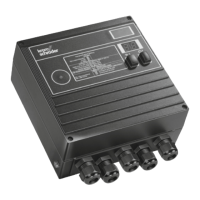
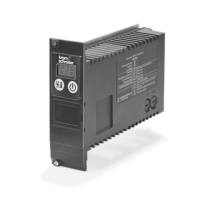

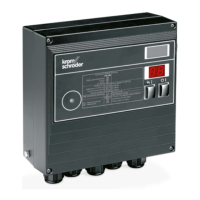
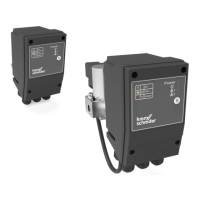


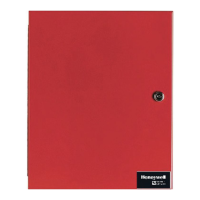
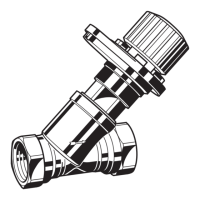
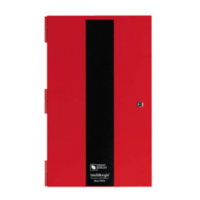
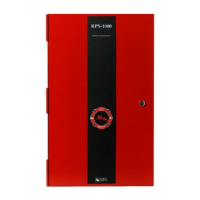
